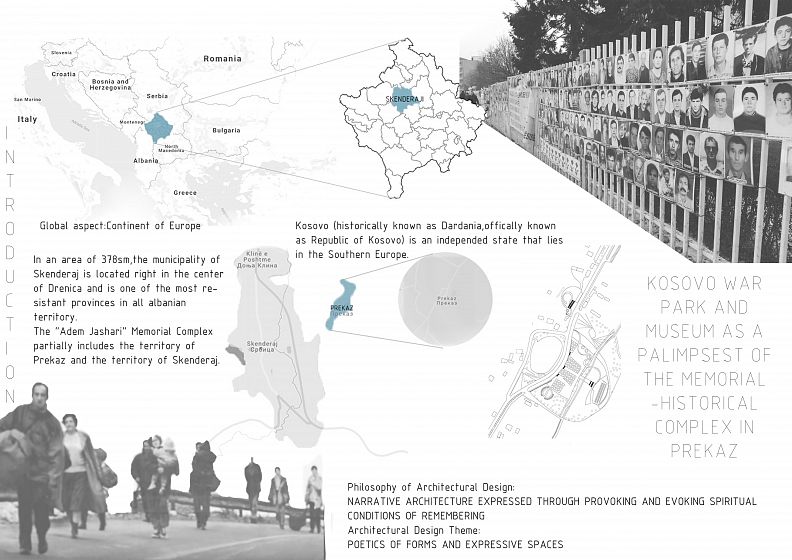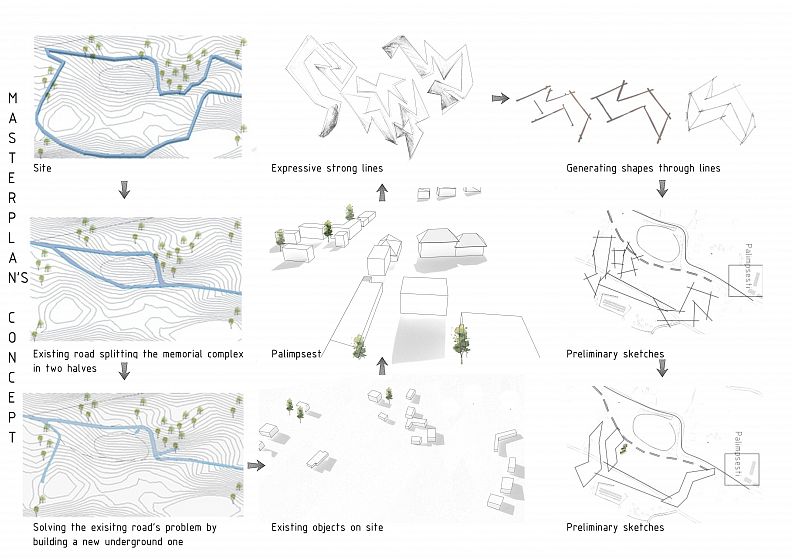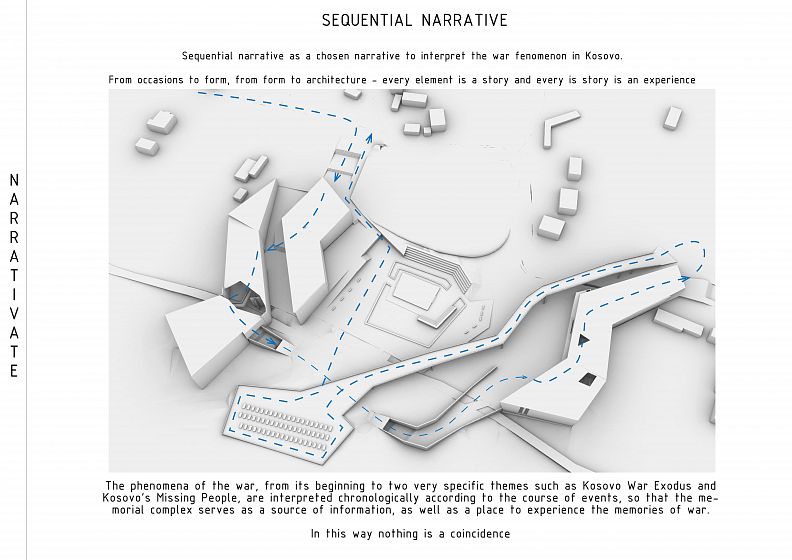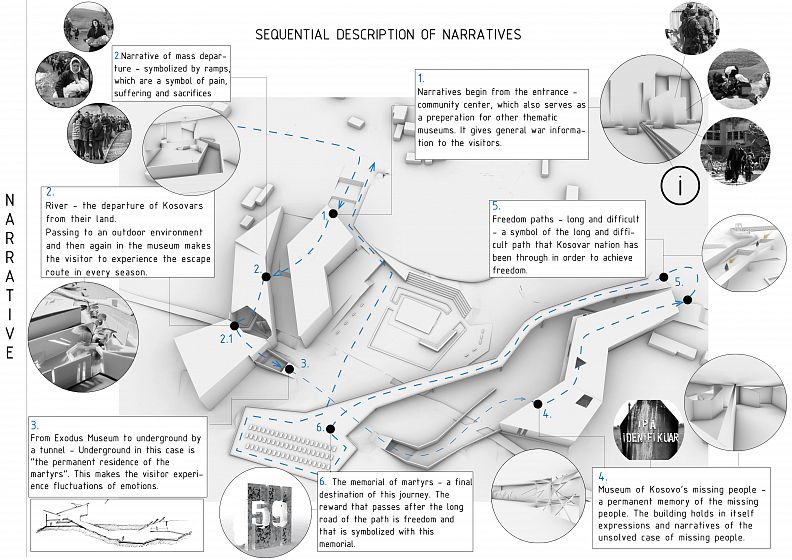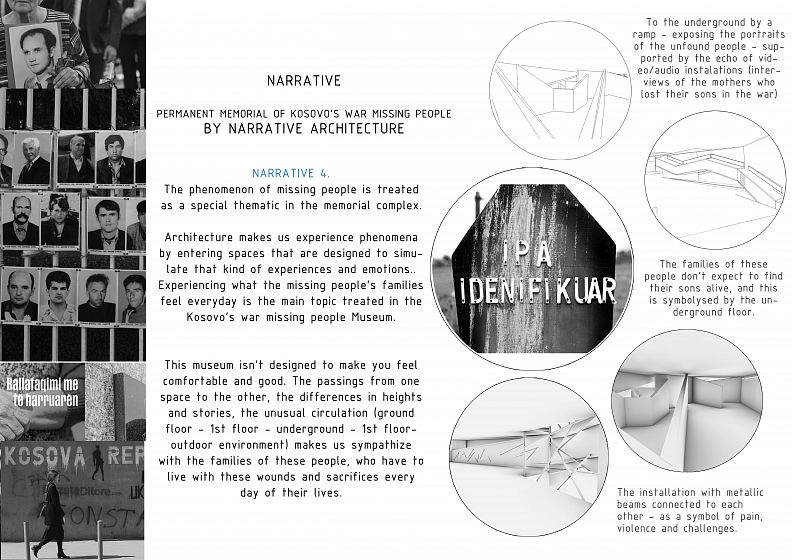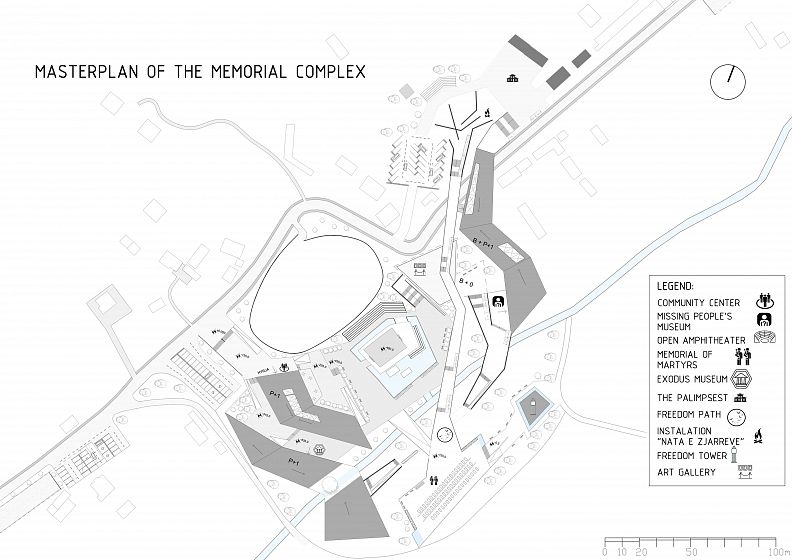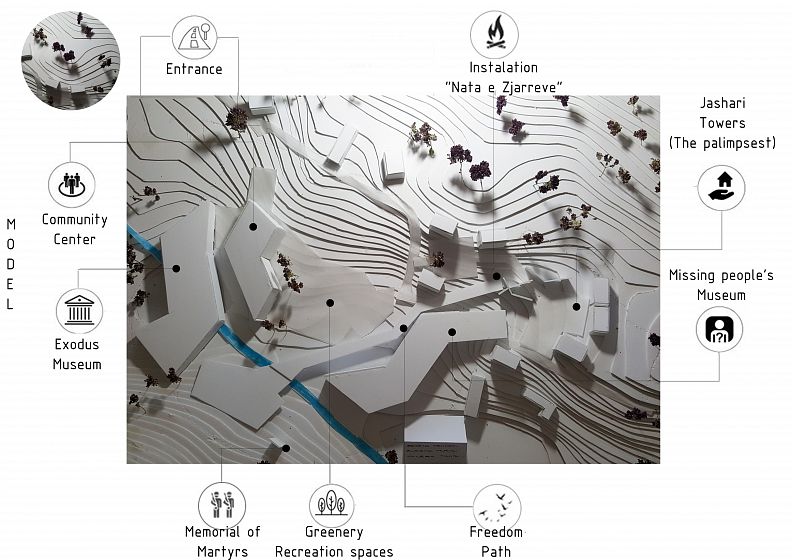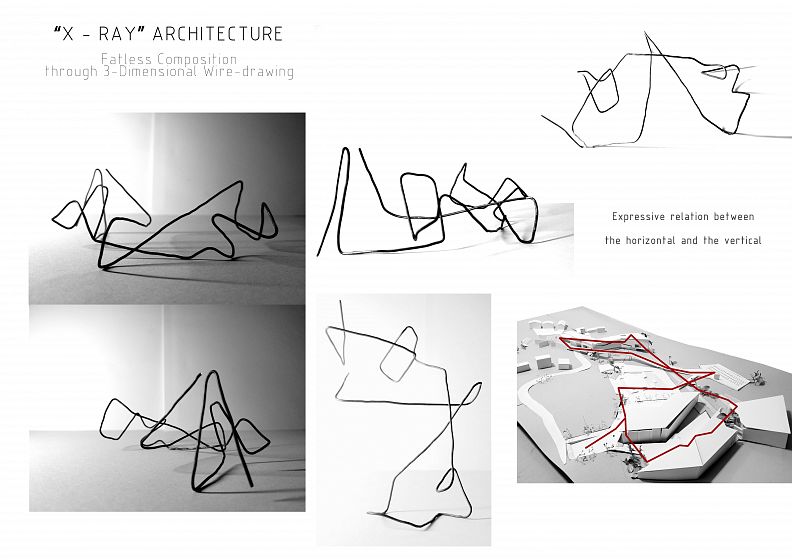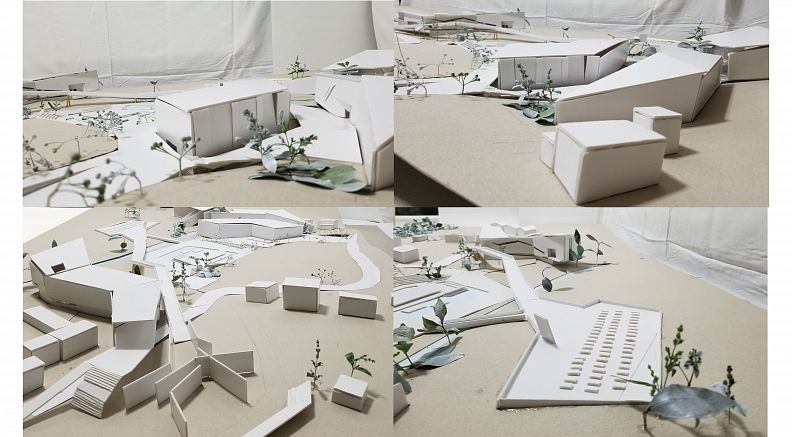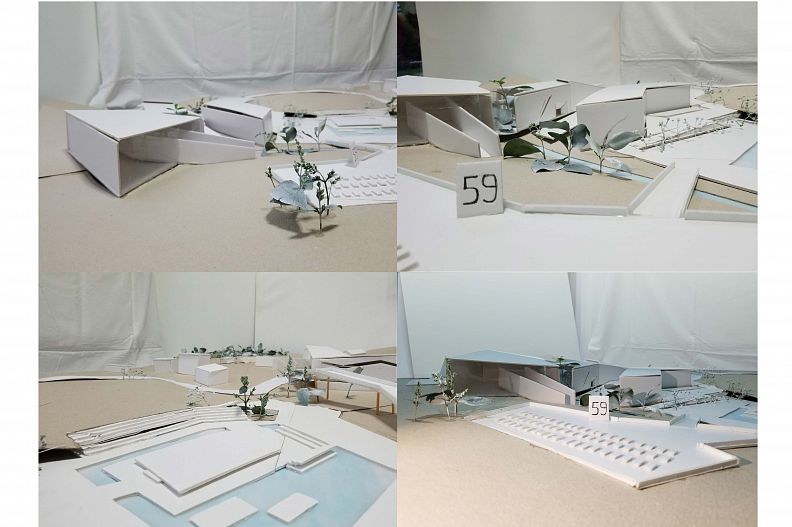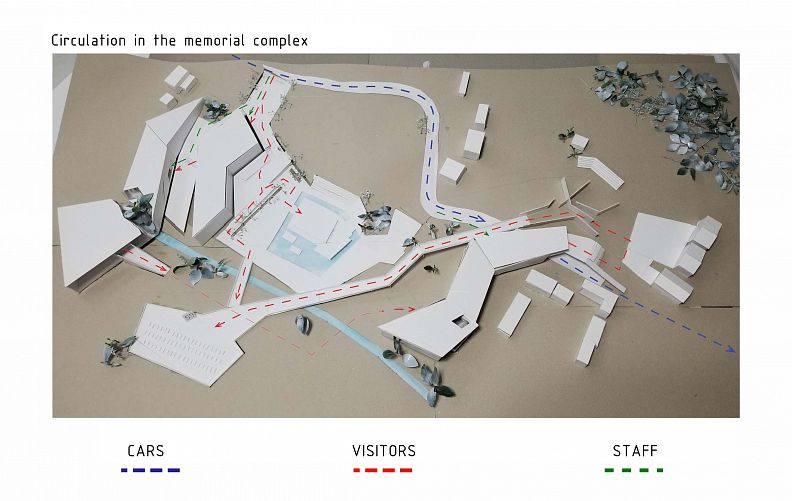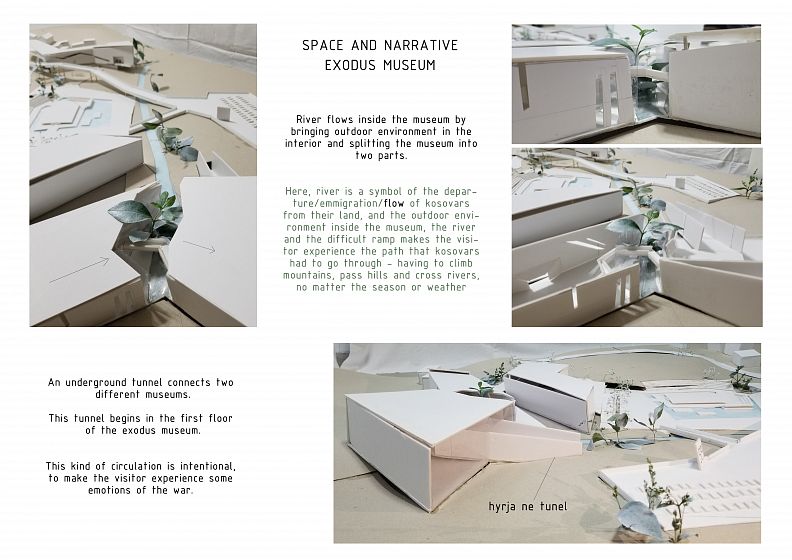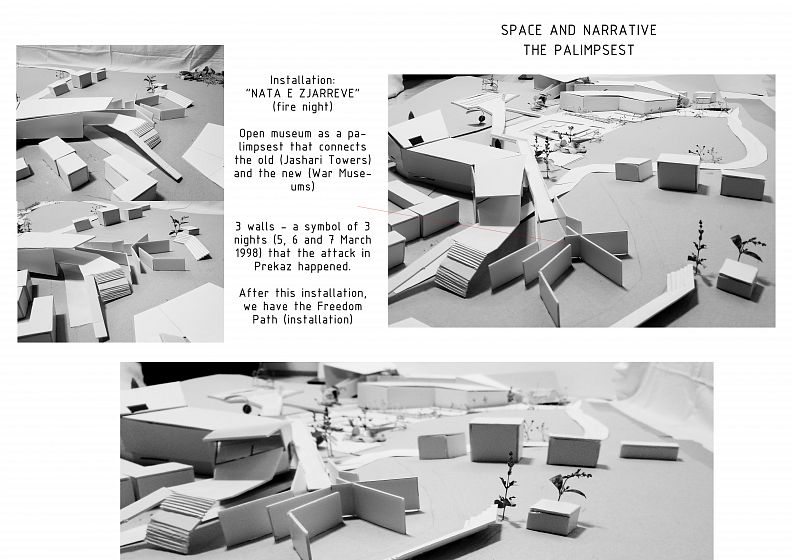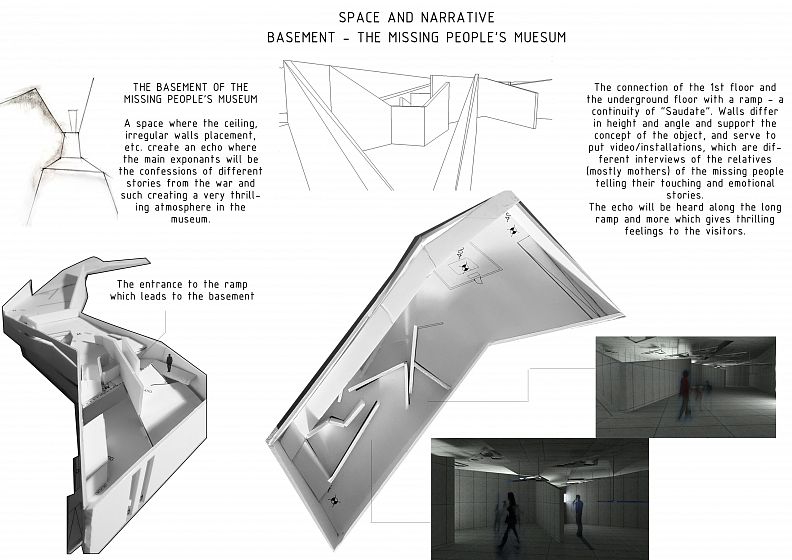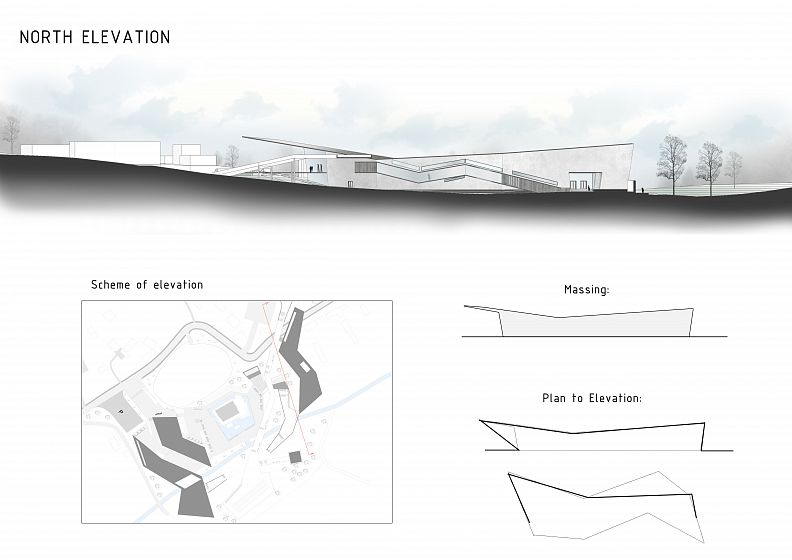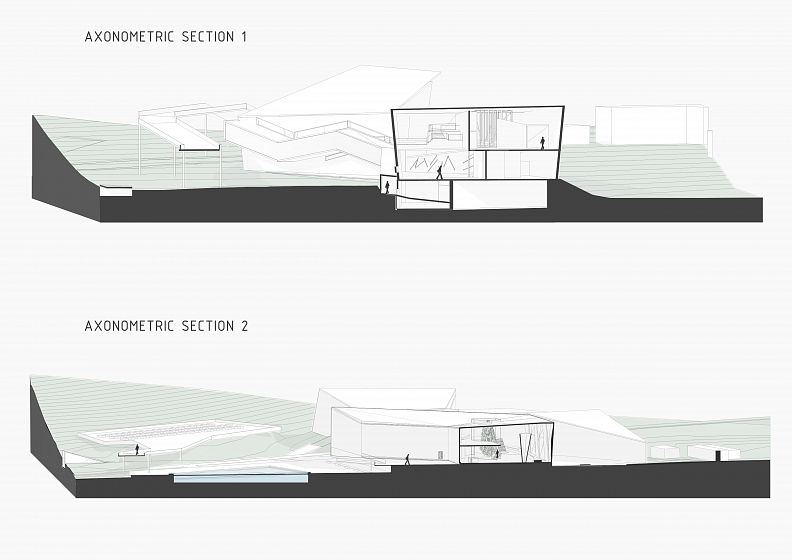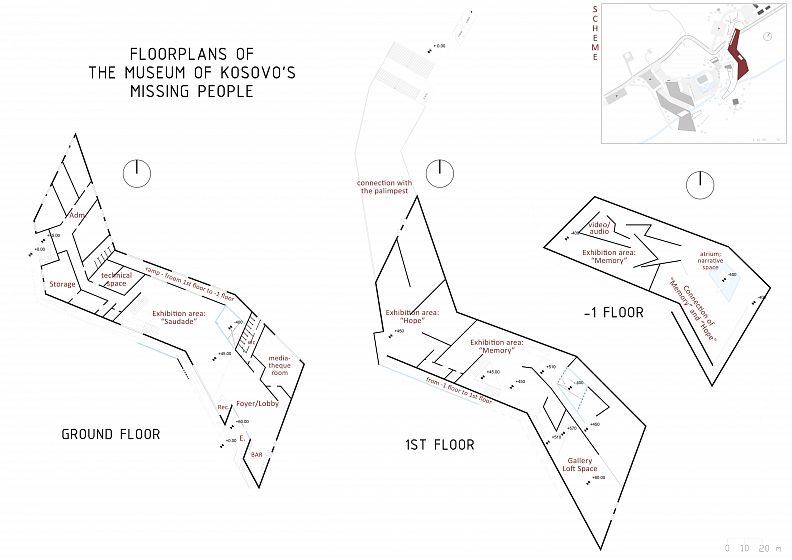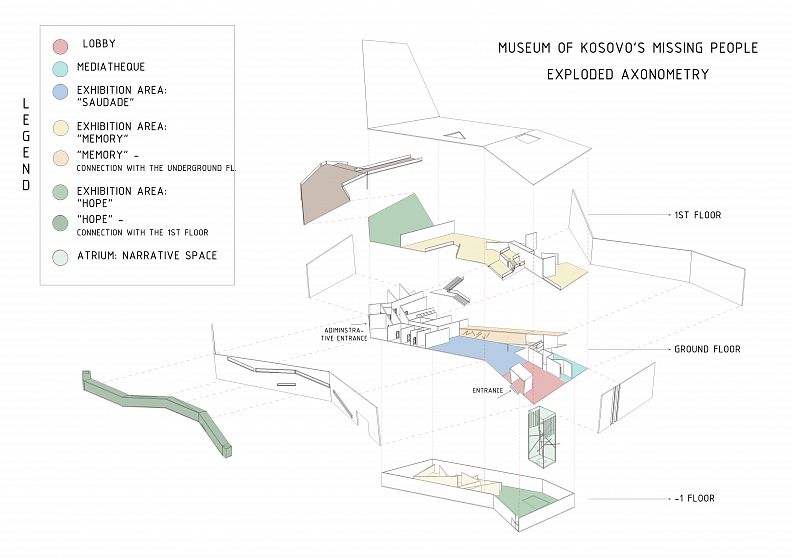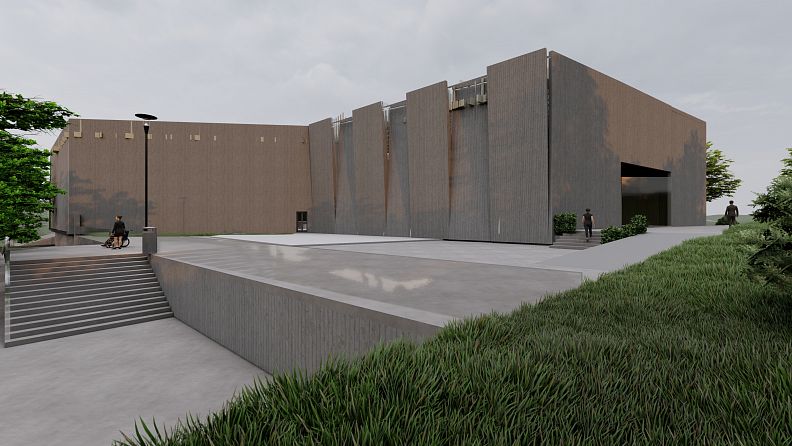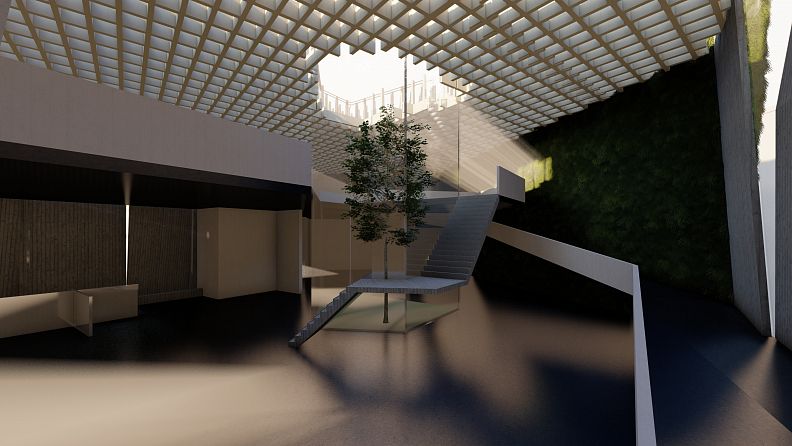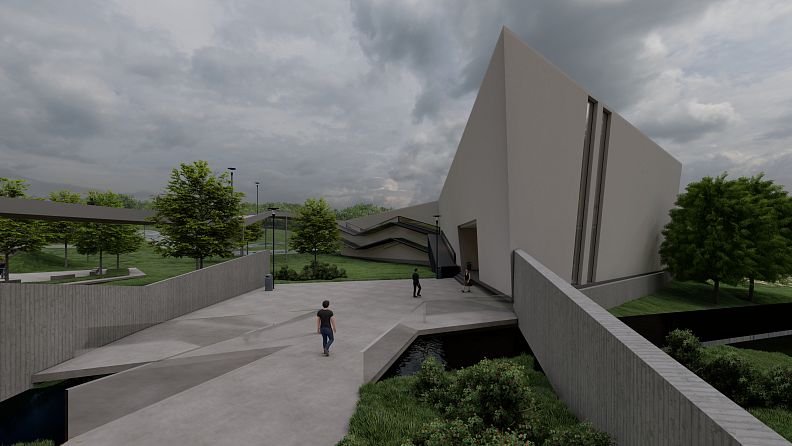Memorial Historical Complex - "Adem Jashari"

Project idea
People are connected, attracted and "rooted" for places and especially certain spaces, not merely for their physical formal aspects, but for the meaning they hold and convey to them, meanings that create a communication between man and the environment of built or natural. The events which leave traces in the life of the individual, society and nation, are those which mostly root man for a place and its features. The recent war in Kosovo left many indelible marks on the life of people and the environment in which it took place. On the 59th day of the year 1998, February 28th marks the beginning of the war accompanied by the attacks from the army of former Yugoslavia in Drenicë-Kosovo, continuing until June of year 1999.To this day, this war was one of the most brutal massacres in Balkan, ending up with high numbers of those who were killed, kidnapped, held prisoners, raped and exported from their homes, families and lands.
Approximately over 800.000 Kosovo albanians were exported, over 15.000 of them were killed and most importantly over 6000 of them were “mysteriously vanished” and their fate is yet to be known.
Cultural Centers as a natural continuation of settlements with urban and historical character, remain today among the most eminent spaces of social and cultural activities, interactions and performances, these centers aim to create vibrant and sociopetal spaces, identifying spaces for the community, and to represent at the same time all of these historical developments into architectural values.
Conservation and transmission of these Memories as narratives that weave existing structures and exhibits of the context where the War and Resistance in Drenica started and took place, as well as the development and interweaving of structures, memorials, installations and new spaces to conserve, empower and transmit this Memory to future generations, as well as to give an economic impetus to Prekaz through tourism promotion, remains the main focus in the development of the project for the Kosovo War Park and Museum as Palimpsest of the memorial-Historical Complex in Prekaz.
Project description
Kosovo (historically known as Dardania, officially known as the Republic of Kosovo) is an independent state that lies in the Southern Europe. In an area of 378sm, the municipality of Skenderaj is located right in the center of Drenica and is one of the most resistant provinces in all Albanian territory. The “Adem Jashari” Memorial Complex partially includes the territory of Prekaz and the territory of Skenderaj. The Memorial Complex Adem Jashari is a monument that was built in honor of the family and life of the Kosovo Liberation Army fighter Adem Jashari. Each member of his family was killed in action during the Kosovo War on March 7, 1998 during what was later known as the Attack on Prekaz. The Memorial Complex includes both the houses and graves of several soldiers from the Jashari family. Therefore, it was placed under the national heritage protection by the Republic of Kosovo.
The neglect of heritage can cause the oblivion of a country’s historical past, given that culture impacts on the collective memory, on the other hand even the improper design in incorporating the new with the old can cause perceptual disorders of the past in relation to the present. That is why this Kosovo War Park and Museum as a Palimpsest of the Memorial-Historical Complex in Prekaz is designed. The design strategy started by identifying the main problematics of the site and actual project. We started by replacing the main road to an underground road, and that is because this road divides the complex into two parts. On one side we have the Jashari Towers which are placed under national heritage, and on the other side we have the graves of the soldiers, and the road does only cause a barrier in this case. In order to maintain a permanent memory of the history that this location holds in itself, two very thematic museums are designed, which are: Kosovo’s Exodus Museum and Kosovo’s War Missing People Museum. Different methods were used to provoke and evoke different ideas and also to include everything in the design strategy. Emotional reaction to stories and history was the main thing that led us to further conceptual ideas. We started by pointing the most strategic points in the site location, then, with points as strategic attractors, the emotional reactions were then turned to lines. These sharp and expressive lines were the initial concept of this design. Shapes were generated through these lines. With these shapes and lines as the main form, following the axes, the masterplan of this memorial complex came to life.
The phenomenon of the war, from its beginning to two very specific themes such as Kosovo War Exodus and Kosovo’s Missing People, are interpreted chronologically according to the course of events, so that the memorial complex serves as a source of information, as well as a place to experience the memories of war. The narrative remains a thematic instrument and methodology with a unique language of expressing the physical and psychological role of architecture itself. In this design, SEQUENTIAL NARRATIVE is chosen to interpret the phenomenon of the war. From occasions to form, from form to architecture - every element is a story and every is story is an experience. In this way nothing is a coincidence. Architecture makes us experience phenomena by entering spaces that are designed to simulate that kind of experiences and emotions.
This journey of experiencing war narratives and memories, starts from the community center. This has a strong connection to the outdoor environment, where lies an open amphitheater and also recreational areas for the visitors. The community center contains different activities for the visitors, such as: Youth Center, Restaurant, Coffee Bar, Conference Room, etc. In order to make this part of the sequential narrative journey, general information of the last war in Kosovo is given to the visitors, so that they have a clear understanding and good preparation for the museums themes.
Then, the circulation flows along the Kosovo’s Exodus Museum. The narrative of mass departure of the Kosovars during the war is symbolized by ramps, which are a symbol of pain, suffering and sacrifices. Another symbol of this phenomena used in this museum is the river, which flows inside the museum and divides the museum in two parts. The flow – is a symbol of the departure (the flow) of the people from their land. The outdoor environment inside the museum makes the visitor experience the departure of people in every season and every weather. The ramp (serves as a bridge in this case) is tiring and irregular and is a symbol of how people had to climb mountains, pass hills and cross rivers, in order to get to a safe place, where their lives aren’t in danger anymore. Also, the design of this museum is supported by natural light strategy and façade articulation, as significant points to help with the experience of these narratives.
From the 1st floor of this museum, we have a ramp which leads to an underground tunnel. This tunnel is a symbol of the permanent residence of the “martyrs” of our country, who sacrificed their lives for our freedom. This tunnel makes the transition from the Exodus Museum to the other thematic Museum which is Kosovo’s Missing People from the War Museum. This museum holds in itself expressive narrative of the unsolved case of the missing people. Experiencing what the missing people’s families feel every day is the main topic treated here. This museum isn’t designed to make you feel comfortable and good. The passing from one space to the other, the differences in heights and stories, the unusual circulation (ground floor - 1st floor - underground - 1st floor- outdoor environment) makes us sympathize with the families of these people, who have to live with these wounds and sacrifices every day of their lives. This museum has 3 main Exhibition Areas which are: “Saudade”, “Memory” and “Hope”. Each element, each wall, each window and everything else is thoughtfully integrated in the design of this museum, in order to raise awareness and make the architecture itself serve as a narrative and as an emotion of this very touching and thrilling phenomena, that still remains unsolved for years.
This museum leads to another part of the memorial complex, which is the palimpsest. Here, we have the Jashari Towers, which is a very important element in this site. Every place and space can be read as a stratification and accumulation of many traces of historical developments, including historical events and activities in time and space. As a result of the historical past, the old historical buildings and new development should create a co-existent Palimpest with the spirit of the place – Genius Loci. This is why in this specific area, where the historic monuments lie, an installation is designed. This installation, only serves as a connection of the old and the new, and is a small intervention in front of the Jashari Towers. Here, we designed 3 walls. These walls are in different angles and heights. They are a symbol of the 3 nights (5,6 and 7 March, 1998) that the attack in Prekaz happened. Each year, on these dates, 56 flambeaus are lighted in honor of 56 people (soldiers, familiars and kids) who lost their lives by the Serbian Army, in this attack. This event is called “Nata e Zjarreve” (fire night), and the installation has the same name. The palimpsest leads to another installation which is called “The Freedom Path”. This is a path, which connects the palimpsest and the graves of the soldiers. This path, is long, but it gives a beautiful view of the museums and the complex’s landscape from the top. The memorial of martyrs and the Freedom Tower is the final destination of this journey. The reward that passes after the long road of the path is freedom and that is symbolized by this memorial.
Technical information
Site general analysis and introduction of the architectural project.
Design strategy and Concept of the architectural project.
Narrative Architecture - introduction to the chosen narrative and an overview of the narratives of this project.
The Masterplan of the Memorial Complex (+legend).
Volumetric Physical Model and its functional legend P 1:500
X-Ray Architecture - Fatless composition - abstract model of the memorial complex (This method was systematically used in previous conceptual phases of the design process)
Physical Model of the Memorial Complex - P 1:200
Project interpretation:
Floor Plans and Diagramms:
Ground Floor
1st Floor
-1 Floor
Sections:
Section A-A
Section B-B
Facades/Elevations:
North Elevation
South Elevation
Axonometric Sections
Atmospheric Lumion Renders
Co-authors
Students: Blerina Muriqi, Valëza Tahiri, Brikena Mehmeti
Professor: Banush Shyqeriu Arch.

